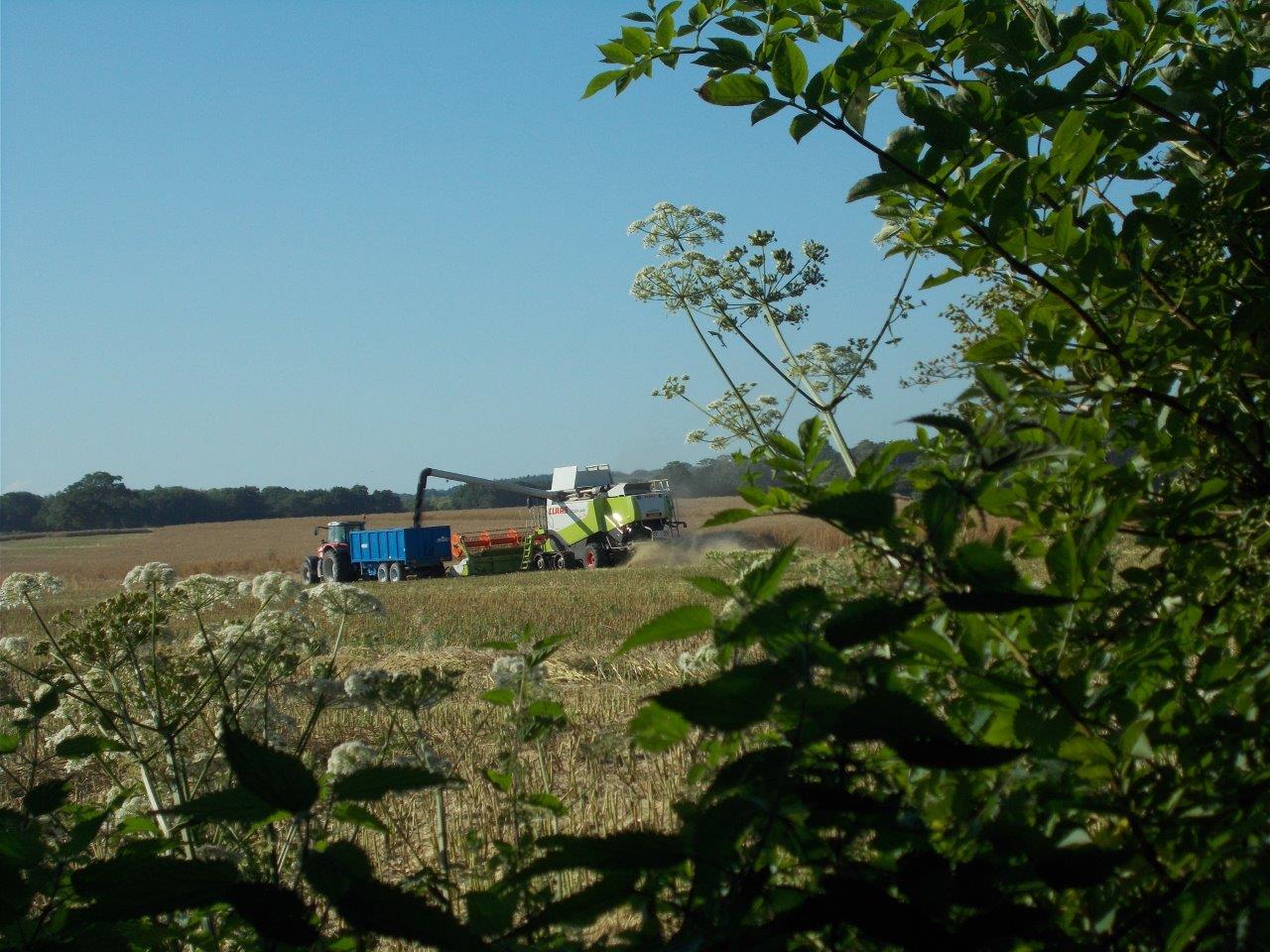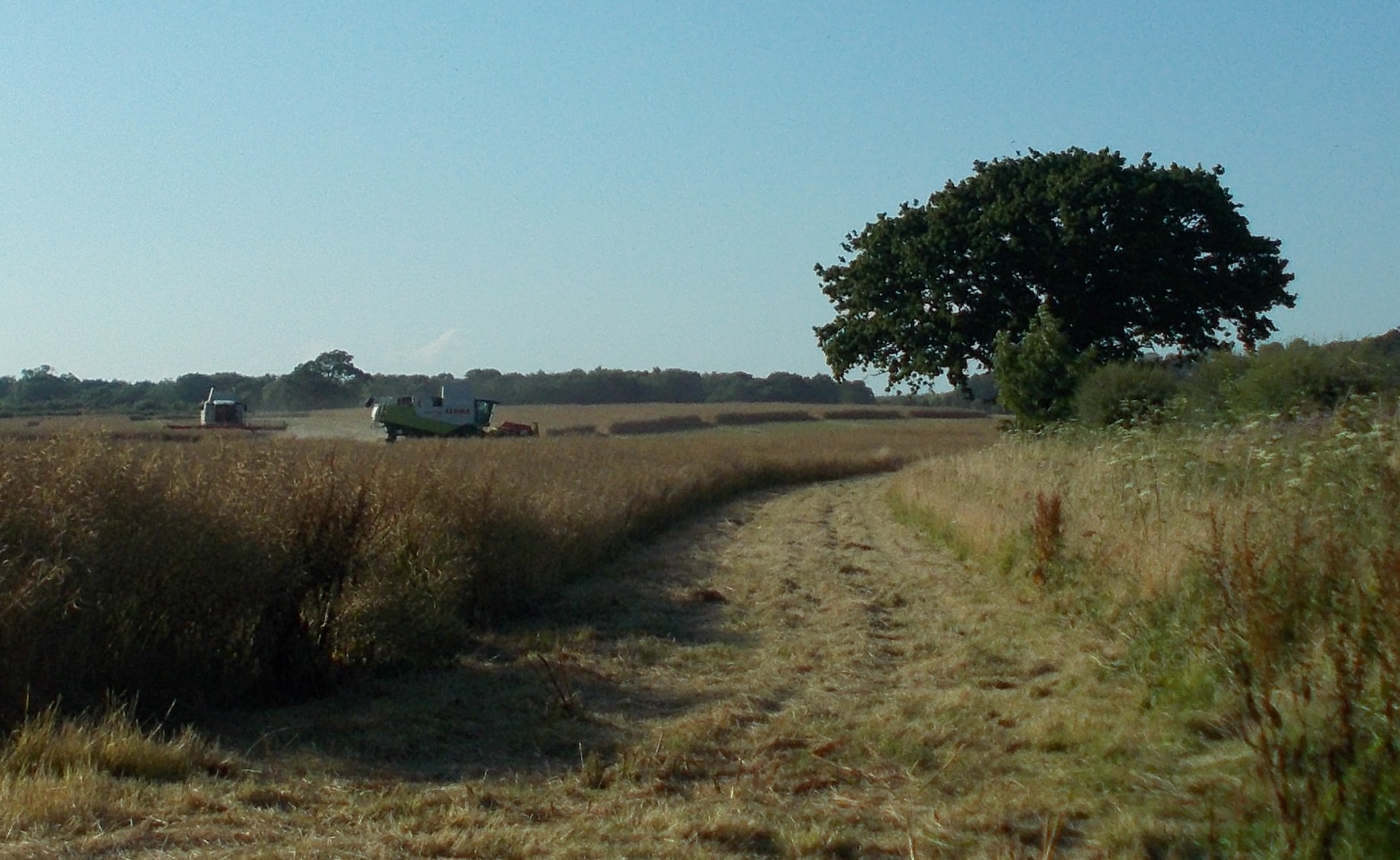 Harvesting is happening in Binsted this afternoon. This rich central area of arable fields, surrounded by stream-valleys with grazing marsh, is the reason Binsted has the shape it has, and why it feels so old.
Harvesting is happening in Binsted this afternoon. This rich central area of arable fields, surrounded by stream-valleys with grazing marsh, is the reason Binsted has the shape it has, and why it feels so old.
Binsted is a non-nucleated village. It has kept its shape, as three outlying farmsteads (Church Farm, Marsh Farm, Binsted House) connected by a U-shaped lane, because of its geography. Binsted is a peninsula, cut off by huge woods to the north, and 'Rife' streams with marshy banks - one in a steep valley - on its west, south and east sides. Because the best arable land was in the centre of this 'U' shaped peninsula, the farmsteads were never moved into an expanding village centre surrounded by open fields. That is what happened to most villages in late Saxon times – nearby Walberton, for instance. This process, known as ‘nucleation’, happened in the 7th and 8th centuries (‘Shaping Mediaeval Landscapes’, Tom Williamson).
Its spread-out shape did not prevent Binsted from being an important place. ‘Binsted Hundred’, also called 'Avisford Hundred', was a Saxon administrative unit of land which stretched down to the sea. The ‘Hundred House’ where its courts were held was in Binsted, in Hundred House Copse.
With its 38 houses spread out round its U-shaped lane, Binsted still feels very old and mysterious. Almost anyone you meet and mention it to says ‘Binsted! - isn’t it haunted?’ or something like that. A google search will find people shining lights and looking for black magic in the woods. Tradesmen, health workers, rangers and others I speak to are afraid of the woods. Some remember hearing something ‘coming after them and stopping when they stop’. Others remember running on paths through Binsted Woods to get through them quickly. Some won’t go near the Madonna Pond, within the woods, for fear of what they may see there. An eminent archaeologist saw a ghost at the ruined Binsted House when a boy. This sense of the numinous or fearful may be connected to Binsted’s feeling of ancientness.
 Yet in the daylight people take deep pleasure in the naturalness of its ancient landscape. The modern reordering of man's self-placement in the environment, the 'nucleation' of villages which happened elsewhere, did not happen in Binsted. So we are looking back through Binsted to harvest memories of a past community and landscape form. It goes back to the 7th and 8th centuries, and beyond. Long may the special character of Binsted last, and long may its harvests continue.
Yet in the daylight people take deep pleasure in the naturalness of its ancient landscape. The modern reordering of man's self-placement in the environment, the 'nucleation' of villages which happened elsewhere, did not happen in Binsted. So we are looking back through Binsted to harvest memories of a past community and landscape form. It goes back to the 7th and 8th centuries, and beyond. Long may the special character of Binsted last, and long may its harvests continue.
Emma Tristram
NB: nothing so special can be taken for granted now. The harvest photo left is looking straight along the line of the Binsted Option for the Arundel Bypass. ABNC are asking Highways England to drop this Option from their shortlist.

